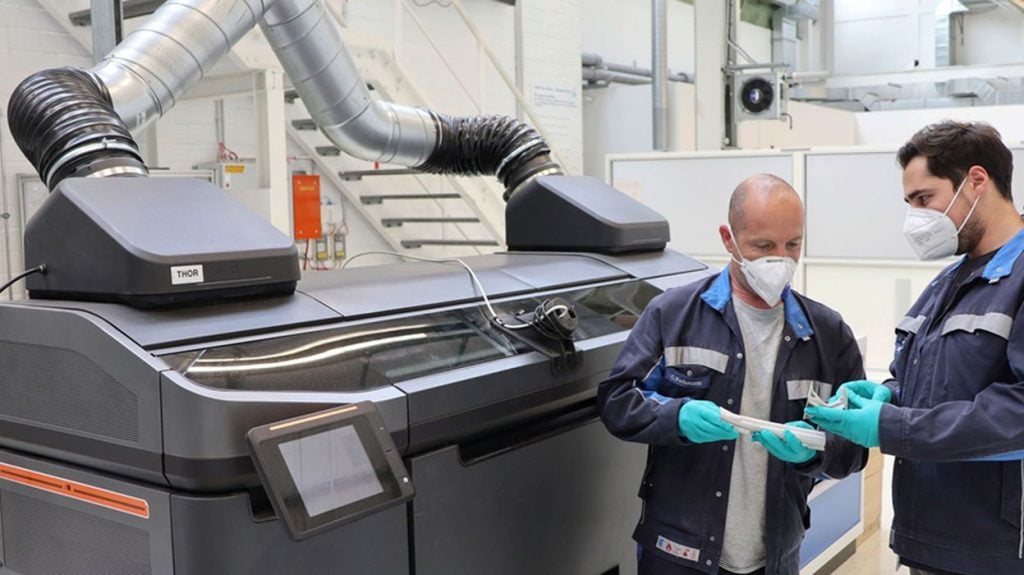
Charles R. Goulding and Preeti Sulibhavi examine the reaction of automakers in China during the recent crisis.
Recent recurring China COVID-19-related lockdowns have spurred social unrest and increased supply chain disruptions. One company impacted is Volkswagen, the large global auto manufacturer. Volkswagen has 33 manufacturing plants throughout China.
Many Volkswagen plants have had shutdowns during the COVID-19 pandemic. On November 28th, 2022, Volkswagen announced that two of its Changchun, China production lines were being shut down due to a shortage of parts. Volkswagen has been increasing its 3D printing capabilities, which include production parts.
Volkswagen’s expanding 3D printing capability includes working with Siemens, HP, and GKN Powder Metallurgy. This should enable the company to print more and more of its underlying components. VW is taking 3D printing very seriously. In an interview management was quoted as saying:
“Despite the ongoing challenges of the coronavirus pandemic, we’re continuing to work on innovation,” says Christian Vollmer, member of the Board of Management of the Volkswagen Brand responsible for Production and Logistics. “Together with our partners, we aim to make 3D printing even more efficient in the years ahead and suitable for production-line use.”
When COVID-19 first appeared, the world learned that China manufactured most PPE and innovative 3D printing solutions enabled the US and other countries to provide alternative supplies.
Now, the world needs alternative supply sources for all products where China has a major market share. We have written multiple articles on expanding numbers of new product source locations with 3D printing ability including, but not limited to, India, Vietnam, and Singapore. In fact, Apple CEO, Tim Cook, has recently said it is looking to ramp up manufacturing operations outside of China due to COVID-19 lockdown protests disrupting its production in the country. Cook has said in regards to shifting operations to India and Vietnam, “We continue to look at optimization.” Not only can big, high-tech companies shift their operations, but they can integrate 3D printing to satisfy part and component shortages as well.

In fact, HP is providing the necessary 3D printing hardware for VW to integrate AM into its manufacturing processes. Siemens is responsible for the software end of this project. VW is investing heavily in technology as it is spending a mid-double-digit, million-euro figure over the past five years to achieve its 3D printing goals.
This is not the beginning. Volkswagen has been using 3D printing for its brand Audi and its former brand, Porsche. This encompassed the lightweighting of components, including water connectors inside the engine of the Audi W12. Furthermore, as a positive result of using FDM desktop 3D printers, Volkswagen’s factory in Portugal saw an annual saving of US$160,000 in typical production costs.
While this may be no surprise to the readers of Fabbaloo, it is shaking up the auto industry.
The Research & Development Tax Credit
The now permanent Research and Development (R&D) Tax Credit is available for companies developing new or improved products, processes and/or software.
3D printing can help boost a company’s R&D Tax Credits. Wages for technical employees creating, testing and revising 3D printed prototypes can be included as a percentage of eligible time spent for the R&D Tax Credit. Similarly, when used as a method of improving a process, time spent integrating 3D printing hardware and software counts as an eligible activity. Lastly, when used for modeling and preproduction, the costs of filaments consumed during the development process may also be recovered.
Whether it is used for creating and testing prototypes or for final production, 3D printing is a great indicator that R&D Credit eligible activities are taking place. Companies implementing this technology at any point should consider taking advantage of R&D Tax Credits.
Conclusion
The new lockdown restrictions in China, and the resulting protests are creating a massive disruption for the auto industry’s supply chain. To remedy this situation, it would benefit the auto industry to look to VW as an example of a resilient automotive leader who is circumventing the problem by utilizing 3D printing.
